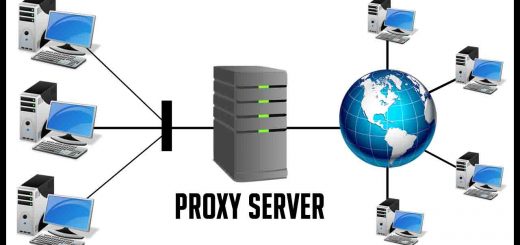Cloudflare uses, features, advantages and disadvantages
Cloudflare is a CDN ( Content Delivery Network ) that offers more features than the Standard CDN can offer, It offers added security to DDoS attacks, It caches the static resources of your website making your site load faster & putting less load onto the web hosting, It is the CDN which sits in the middle of your domain name and web host.
Cloudflare
Cloudflare passes all the traffic that would hit your server to go through the filter process of Cloudflare and only the validated traffic is being routed to the host, You can have different security levels based on the spammers and the hackers that you want to be filtering out.
It is the commercial content delivery network with the integrated distributed denial of service (DDoS) defense, It can act as a reverse proxy & domain name server to your website, It offers a useful IPv6 transition mechanism if your hosting provider doesn’t present native IPv6.
It is the content delivery network that acts as a middle layer between your actual host & user browsing site using your domain name, It is a free service, with premium packages for high-traffic sites, You can change your web hosting without waiting for the name servers to propagate, It has many data-centers around the world, So, your visitors will be served by the data-center that is nearest to them.
You can use Cloudflare when you are bottle-necked on the bandwidth or have too much spam or have issues with DDoS or have issues with the site getting hacked, If your host is low quality and has issues with the site load time or the site getting offline too often, CloudFlare can store the static substances on your web-page like the pictures, JavaScript and CSS, yet not HTML.
Content delivery network or CDN is different from Cloudflare, You can use an alternative mirrored CDN URL to serve the static content from the CDN, CDN serves the content from the nearest location from where the content is being requested which makes the content served faster, The browser doesn’t need to send extra header information for the static content and you can reduce the packet size to speed up your site’s loading time.
If you are serving the CDN content from the same domain/subdomain, CDN can free up your server from serving static content, it can serve the content from the nearest location to the end user, It allows the browsers to fetch the content parallel to your site’s content and it makes faster user experience.
You can go to Cloudflare.com and sign up for a free account, Add your domain and it will automatically detect the current name-servers and IP address of the current host, Just select the security & cache settings you like and click next, Now copy the name-servers given by Cloudflare and add them in your domain registrar.
Advantages of using Cloudflare
Cloudflare hides your web host’s original IP address so that any hacker can not attack the server, It caches your site’s some (or all) resources to load the site quicker and make the actual server work less, It gives you the ability to block all the DDoS attacks by changing the site’s security.
As CloudFlare is like a CDN, it can continue to serve cached versions of most of your web pages even if your website goes down, It enables you to add multiple domains, You can block access to your site for certain regions or countries, If you are receiving many attacks from particular countries, It gives you free SSL, which you can use on shared host as well.
Cloudflare is free to get started whereas the other CDN services are paid, As your site is being filtered and only genuine traffic is being passed, your site can save resources as well as increase the speed of your site because of the caching being performed by the Cloudflare.
You can filter out the bad traffic & The website will be protected from automated bots and spammers, Not all the traffic goes through Cloudflare, so, you will save the bandwidth that you may waste due to spammers and hackers, With Cloudflare, The stats are more accurate than JavaScript based stats because they catch all the traffic stats that JavaScript may miss because of blocked JavaScript content or pages not being loaded.
Cloudflare blocks DDoS and DoS, DDoS is an attack on the server to send too many automated requests to the server from various locations to bring it down If your IP Address is known to the hacker, Cloudflare can protect your server from DDoS as an attacker targets IP directly by passing the Cloudflare.
CloudFlare is a middleman between your server and your visitors, Sensitive data go through the CloudFlare server when they are delivered to a client, CloudFlare can monitor all your traffic, It can inject the code into your HTTP headers and your web pages and it can have any consequences.
DNS changes are faster, Your DNS is controlled by Cloudflare, Cloudflare mitigates DDOS attacks, It helps to reduce useless incoming traffic, Cloudflare offers free HTTPS, HTTP/2 & SPDY certificates for your domain, It offers free ( HSTS ) HTTP Strict Transport Security for your website, It allows your website to be accessed through an IPV6 address even if your server has an IPV4 address, It can minify CSS, Javascript and HTML.
Cloudflare can protect your API by limiting the number of requests for a given time using a rule, It is a paid option and it is very easy to setup from the Cloudflare configuration page, Cloudflare injects javascript into the code & modifies the code of returning pages, It modifies the headers of pages, It can block one’s website if they choose to and also monitor one’s visitors & gather information about them.
Cloudflare is very easy to set up and use, If you use WordPress or Drupal & have access to your domain registrar ( to change your name servers), The CDN will deliver cached images & other bits of your website (but not the HTML) to your visitors from one of the several Cloudflare data-centers located around the world instead of from your web-server, It will optionally minify your HTML, Javascript and CSS, The result is a measurable improvement in the perceived performance of your website.
Disadvantages of Cloudflare
For some reasons, CloudFlare can slow down the page load rather than speed it up, It is normal as a step (a hop) is added between your server and a client Since additional settings should be made on the CloudFlare website, The misconfiguration can lead to downtimes and traffic drops.
Unless your site has a decent amount of traffic & you need spam protection and have issues with hacking or DDoS, Cloudflare had issues with owners being blocked out of the site, Cloudflare sometimes disallows access to the site, If it goes down, your site will go down, If you are looking for a way to make your blog or website more secure, speed it up, or make sure it is available.
If you are on shared hosting, you may need to check if your host supports Cloudflare or not though most shared hosts do not support Cloudflare, With Cloudflare, setting wildcard sub-domains is not possible, There is not enough information on the data that is cached.
Cloudflare offers limited security rules, Cloudflare’s basic/shared protection is great, but if you need custom page rules you are limited to only 3, If you are on a shared web host, this is still a giant improvement over nothing, but if you are on a dedicated server running Mod_Security and integrated CSF, it’s very limiting.
Cloudflare has limited stats and analytics, The threat and attack statistics are very limited in detail – but still far better than nothing, The daily traffic reports are also limited, but you can still use your Google Analytics and this becomes a non-issue.
DDoS Attacks risks, How to protect your website from DDoS Attacks
Free WordPress Themes features, advantages and disadvantages



